
views
Making “Cowboy Coffee” in a Saucepan
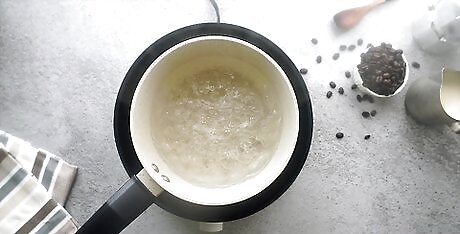
Heat at least ¾ cup (6 oz) of water in a pot until boiling. Measure out ¾ cup (6 oz) of cold water for every cup of coffee you’d like to make. Pour the water into a saucepan over medium-high heat and bring it to a boil. Optionally, use a stovetop tea kettle or a deep pan to boil the water.
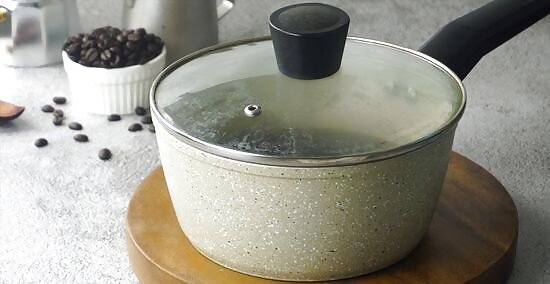
Turn off the heat and add 1 to 2 tbsp (10.6 to 21.2 g) of ground coffee. Add 1 to 2 tbsp of ground coffee per ¾ cup (6 oz) of water for a medium-strength cup of coffee. Stir just enough to help the coffee grounds circulate, then cover the pot with a lid. Use medium to medium-fine coffee grounds of your choice. Alternatively, add 1 to 2 tsp (1.8 to 3.6 g) of instant coffee to the water. Some people prefer to bring the mixture back up to a boil for up to 2 minutes to increase the bitterness of the brew. Optionally, mix your grounds with clean crushed eggshells before boiling to neutralize and temper any sharp or overly bitter flavors.
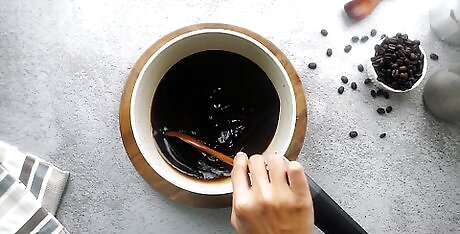
Let the pot sit covered for 2 to 4 minutes or until the grounds sink. Stir occasionally to agitate the coffee grounds. Once almost all the grounds settle at the bottom of the pot, your brew is done! Sprinkling a little cold water into the pot after they’re done steeping can help the grounds settle at the bottom.
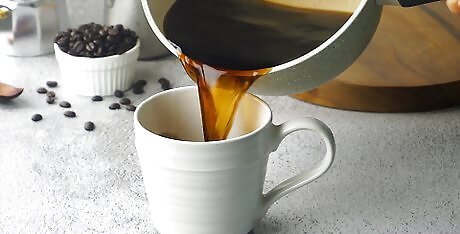
Carefully pour the coffee into a mug and enjoy! Pour gently and slowly so that the grounds stay at the bottom of the pot. If you have a tea strainer or a coffee filter, place it over your mug to help keep the grounds out. Or, ladle the coffee into a mug. Serve your brew with add-ins of your choice, like a creamer, milk, sugar, or sugar substitute. If your coffee tastes too bitter, strain it out earlier than 4 minutes next time. If your coffee is too mild, let it brew for a few more minutes.
Brewing Coffee in a Mason Jar
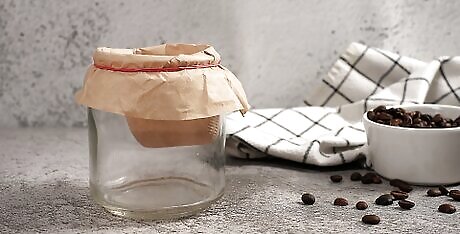
Insert a paper filter into a mason jar and screw the metal band on. Take a paper coffee filter and fold the edges over the mouth of a 2 US qt (1.9 L) mason jar. Remove the metal center lid from the band and screw the band over the filter and onto the jar. This will create a basket for your coffee grounds. Just like a coffee machine, the hot water will pass through the grounds and brew fresh coffee into the jar. Alternatively, use a reusable cloth coffee filter.
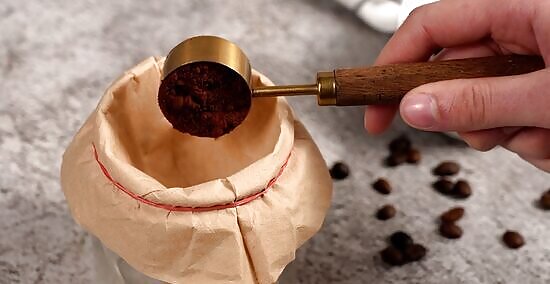
Put 1 to 2 tbsp (10.6 to 21.2 g) of medium-ground coffee in the filter. For this drip coffee, medium-ground coffee beans may be best. If your coffee tastes bitter, increase the size of your grind. If your coffee is flat, pick up a finer ground coffee. To grind your own coffee, place the beans in a burr grinder, a mill grinder, or a food processor.
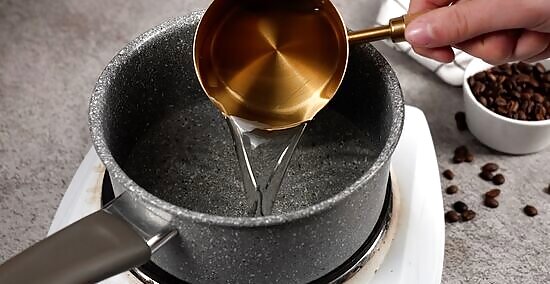
Boil 2 cups (0.47 L) of water in a pot on the stove. Let the water come to a boil, then turn off the stove and let the water rest for about 30 seconds. This can make sure your coffee doesn’t lose its flavor quality during the brewing process. After the water boils, remove the pot from heat. Optionally, pour a little bit of the hot water into the filter in the mason jar to remove some of the filter’s paper taste.
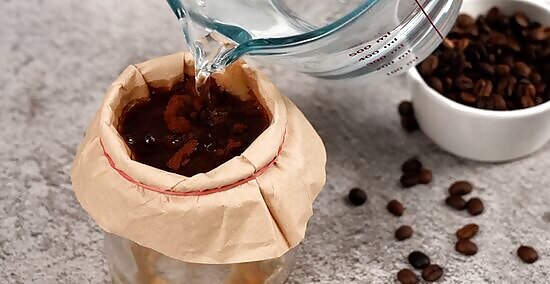
Slowly pour the boiled water into the filter. Pour enough water to fill the filter, then use a spoon to gently stir the water into the grounds. Let it sit until the water filters through, then add more, making sure it doesn’t flow over the edges of the mason jar. Ideally, the water is in contact with the grounds for about 5 minutes.
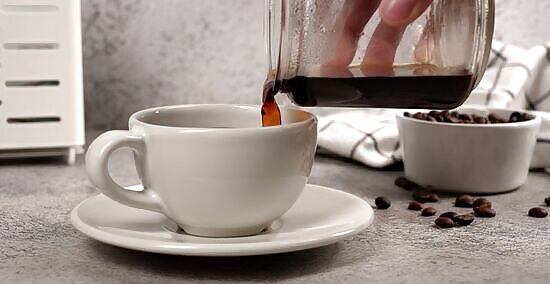
Remove the band and filter and pour the coffee into a mug. Once the water has drained into the mason jar, use an oven mitt to unscrew the band and the filter. Grab the edges of the filter poking out of the band to make sure the grounds don’t spill into the coffee as you’re removing it. Wearing an oven mitt, carefully pour the coffee into a mug and enjoy! This method also works well if you want to make a fresh cup of joe while camping.
Brewing Turkish (or Greek) Coffee
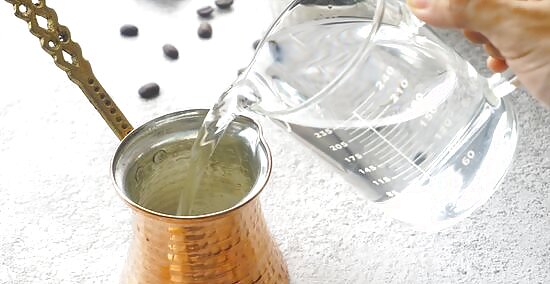
Add sugar and 1 cup water into an ibrik or small saucepan. An ibrik (also called a cezve, briki, mbiki, or toorka) is a small copper or brass pot with a long handle. If you’d like your coffee sweetened, add up to 1 tsp (4 g) sugar or your favorite sugar substitute. Then pour in 1 cup (0.24 L) cold water. If you’re using a saucepan, choose the smallest size you have. Make sure the ibrik has room in the neck so the coffee can froth. You can make Turkish coffee with an equal amount of milk instead of water—just allow the mixture to simmer and try not to heat it to a boil.
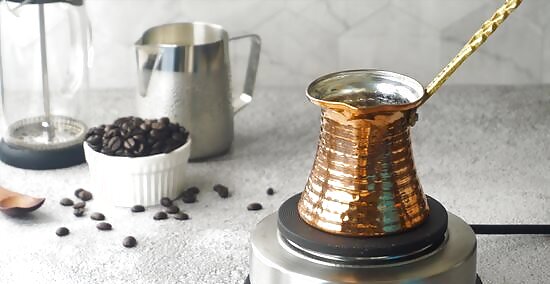
Add Turkish coffee grounds and bring the ibrik or saucepan to a boil. Turkish coffee grounds are ultra-fine, like powdered sugar. Pour in ¾ to 1 tbsp (7.95 to 10.6 g) grounds and allow them to float on top of the water. Place the ibrik or saucepan on medium to medium-high heat. These floating grounds act as a barrier between the water and air, facilitating the frothing process.

Pour the coffee into a cup when the foam reaches the top of the ibrik. When the coffee foams up, pour it into a demitasse (espresso) cup or your favorite mug. Let the coffee sit for 1 to 2 minutes before drinking to let the grounds settle. Try to avoid stirring after pouring the coffee into a cup—this may cause the foam to collapse. Leave the last bit of coffee in the ibrik to trap some of the “sludge.” When drinking, leave the last bit in your cup. Turkish coffee is traditionally served with a glass of water as a palate cleanser.
Using a Moka Pot for “Stovetop Espresso”
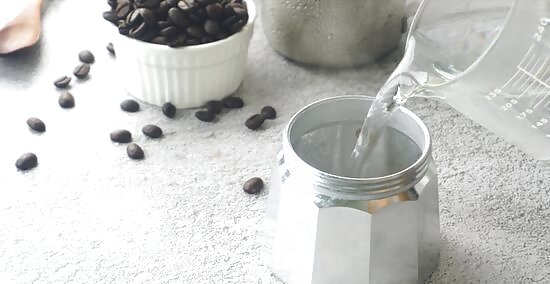
Fill the bottom part of the moka pot with cold, fresh water. A moka pot is an Italian stovetop espresso maker that uses steam pressure to brew coffee. Fill the bottom chamber until the water reaches the little bolt on the side—this is the safety valve of the moka pot. Place the basket inside the bottom part of the pot. A moka pot has three chambers: the bottom chamber is for water, the middle basket is for your ground coffee, and the top part is where the coffee flows when it’s brewed. Alternatively, boil the water in a pot on the stove and then add it to the moka pot to prevent the metal moka pot from overheating and giving your coffee a metallic taste.

Fill the basket with coffee, leveling the grounds with your fingers. For best results, use medium-fine coffee grounds (coarser than espresso grounds, but finer than what you’d use for drip coffee makers). Gently use your fingertips to brush any loose coffee grounds off the edge of the basket that might hinder the seal.

Screw the top and the bottom of the moka pot together. Place the top portion of the moka pot on top of the bottom chamber with the basket (and the coffee grounds) inside. Twist the top piece on until it’s finger-tight. Try to avoid screwing the top onto the bottom too tightly, or it might be more difficult to open later.
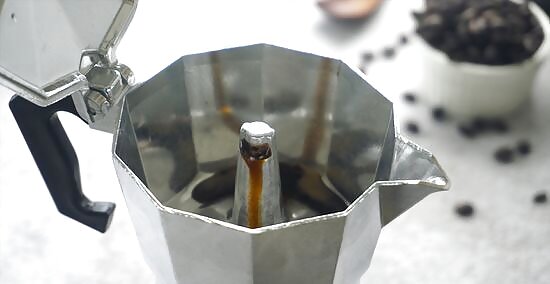
Put the moka pot on the stove with the top lid open over moderate heat. Watch your coffee brew. Once the coffee pouring into the top chamber of the pot turns a golden honey color, remove the pot from the heat and close the lid. Alternatively, close the lid as soon as the coffee comes into the top chamber. Wait 10 seconds, then turn off the burner and let the coffee finish brewing. Optionally, wrap the pot with a cold towel or run it under cold water to stop the extraction process and prevent your coffee from getting a metallic taste.
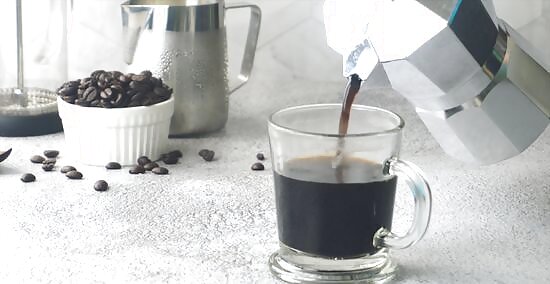
Immediately pour your finished brew into cups or a carafe. Pouring it out of the moka pot prevents the coffee from scorching and becoming bitter. Add in whatever milk, cream, sugar, or sugar substitute you’d like and enjoy your cup of coffee! If this stovetop espresso is too strong for your liking, dilute it with hot water.
Using a French Press
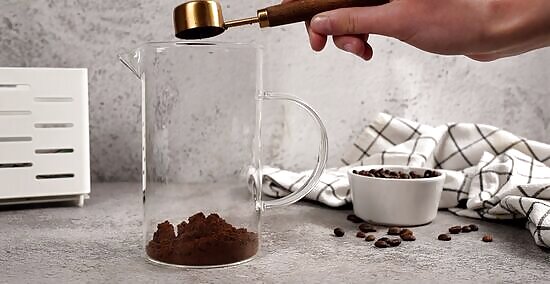
Place 3 tbsp (31.8 g) of coarse ground coffee in the bottom of the press. Remove the lid and plunger from the French press, then pour in the coffee grounds. Coarse, or very chunky, ground coffee is perfect for brewing fresh coffee in a French press. If you’re grinding your beans, pour 4 cups of boiling water into the press to preheat it. Pour out the water and add the grinds to the bottom. 3 tbsp (31.8 g) of grounds is for a standard cup of coffee. For a stronger brew, add another tablespoon (10.6 g).
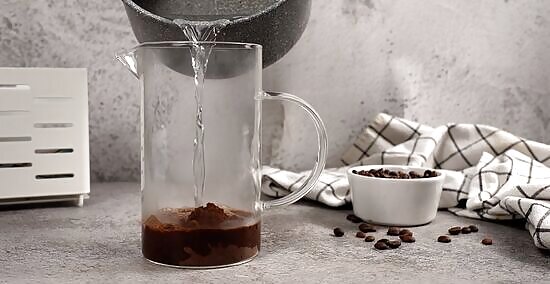
Boil 2 cups (0.47 L) of water, wait 30 seconds, and pour it into the press. Pour water into a saucepan or pot over medium-high heat. Once it boils, remove it from heat and let it sit for 30 seconds to prevent the grounds from getting too hot, which can cause your coffee to taste burnt. Alternatively, pour 1 cup (0.24 L) of water in the French press, let it sit with the lid on for 1 minute, then pour in the other 1 cup (0.24 L) and let it sit for an additional 3 to 4 minutes. You can also boil the water in a tea kettle on the stove.
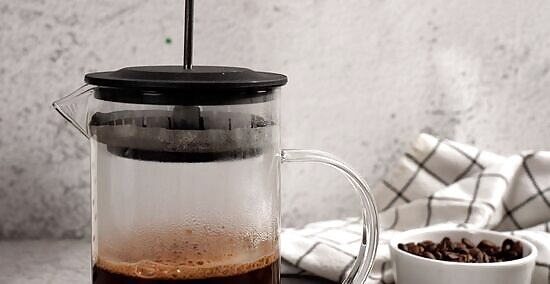
Put the lid on the press and let it sit for 3 to 5 minutes. After 1 minute, you can remove the lid and use a wooden spoon to gently break up the layer of grounds floating on top. The longer you let the coffee sit, the stronger your brew will taste.
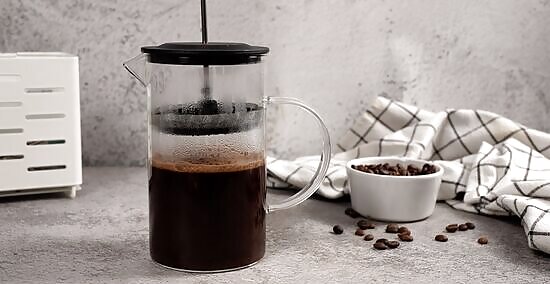
Slowly push the plunger to press the coffee grounds to the bottom. Use the palm of your hand to gently push the plunger towards the bottom of the French press. If the plunger is difficult to press, your grounds might be too fine. If the plunger slides down with no resistance at all, your grounds might be a little too coarse.
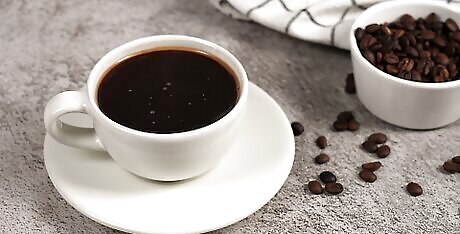
Pour the coffee into a mug and serve. French presses have a lip so you can pour the coffee out directly into your cup of choice. Add in your preferred milk and/or sweetener, then enjoy! If there’s more coffee in the press after you’ve poured it, transfer the rest into a thermos or carafe so it doesn’t continue to brew and become bitter.



















Comments
0 comment